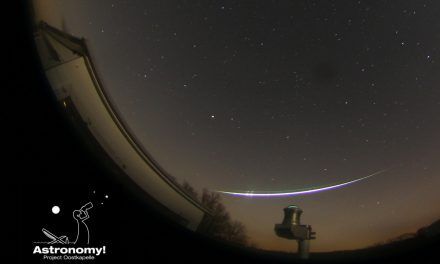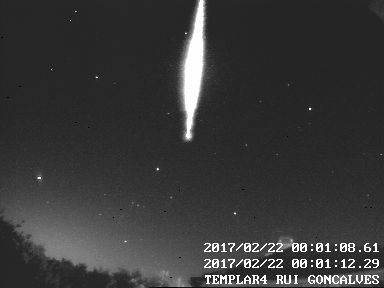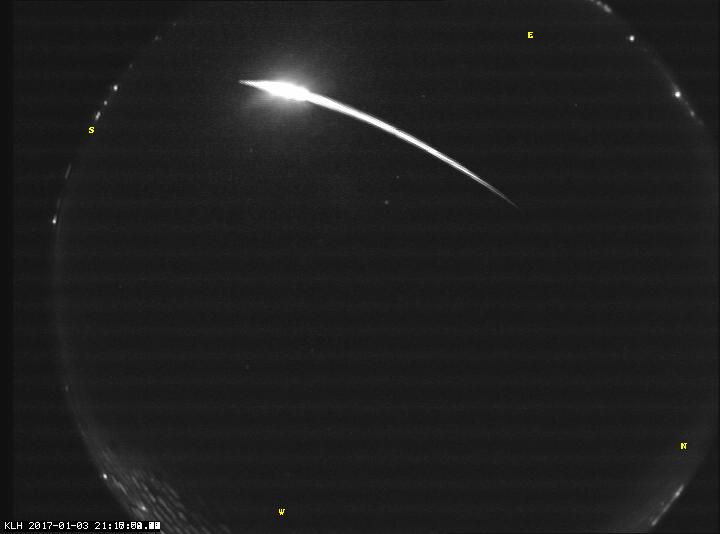A slow moving fireball occurred on 2019 February 15 over Belgium at 20h09m UT at a perfect clear sky. The event was witnessed by many thousands of people that were out after an exceptional warm 15th of February. Most common descriptions were the slow appearance and a green color reported by many people. Luckily many meteor cameras are active in this region which could capture the event and allow reliable positional measurements.
At this stage an overview of the camera images can be given. Jean-Marie Biets was the first to mention this event on the BeNeLux meteor mailing list.

Figure 1 – All sky camera image between 20:08:40 – 20:09:40 UT at Wilderen, Belgium, by Jean-Marie Biets.

Figure 2 – All-sky image of the observatory Astro-Lab, Iris, at Zillebeke, Belgium, by Franky Dubois.

Figure 3 – The fireball recorded at Oostkapelle, the Netherlands by Klaas Jobse. The inset on the top shows the fireball as recorded by the CAMS 3034 Watec, also at Oostkapelle, the Netherlands.

Figure 4 – The fireball as recorded by the All-Sky camera EN-98 at Ermelo, the Netherlands by Koen Miskotte.
Figure 5 – Image from CAMS 380 at Wilderen, Belgium by Jean-Marie Biets.
Figure 6 – The fireball as seen from Grapfontaine, Belgium on CAMS 815, operated by Christian Wanlin and Jean-Paul Dumoulin.

Figure 7 – CAMS 397 image by Bart Dessoy at Zoersel, Belgium, with the fireball and its reflections in the glass of the window in front of the camera.

Figure 8 – The start of the fireball close to Orion as registered by CAMS 807 at Mechelen, Belgium by Luc Gobin.

Figure 9 – The main part of the fireball registered by CAMS 390 at Mechelen, Belgium by Luc Gobin.

Figure 10 – The fireball registered by the UKMON camera at Blackfield in England.

Figure 11 – Location of all the CAMS BeNeLux stations and cameras as until end 2018.








